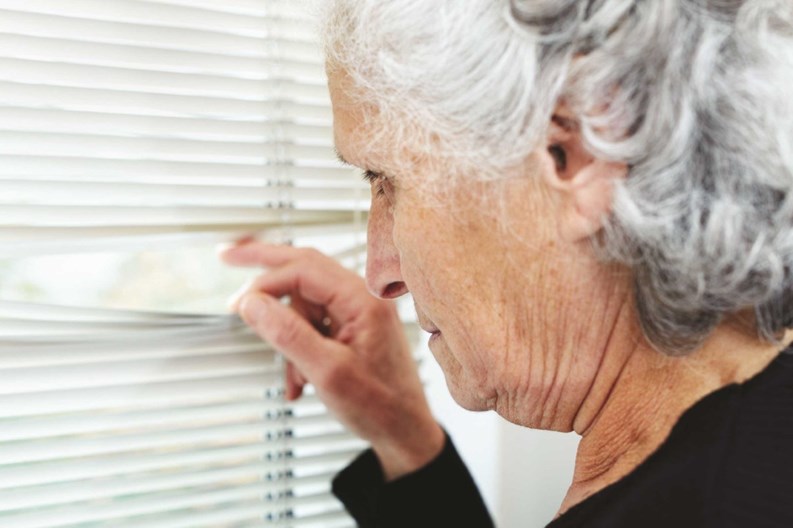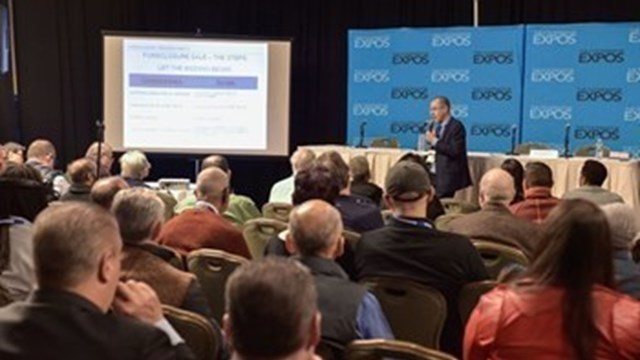Back in the 1980s, McGruff the Crime Dog taught children and parents alike to “Take a bite out of crime.” The tough but affable, anthropomorphic bloodhound was created by the Ad Council for the National Crime Prevention Council and used by police officers to build crime awareness programs among American families. McGruff’s mission is essentially the same as countless proactive homeowner associations nationwide—sniffing out criminals.
Value in Security
According to Neighborhoodscout.com, there is good reason for vigilance. For example, recent annual statistics found that there were 28,415 violent crimes and 120,616 property crimes in the city of Chicago. With nearly three million residents, the chance of becoming a victim of a violent crime is 1 in 94 while the property crime rate is 1 in 37.
The severity of crime statistics varies by region but crime will occur regardless of location which is why a homeowner association watch group is critical. “The good news is that watch groups are probably a strong step in reducing crime because criminals tend to be aware of those communities that have a watch group,” says Attorney Gerald Cassioppi of the Naperville-based law firm of Nyberg & Cassioppi. “There is crime everywhere so you have to do what you can.”
“This is a big city, and bad things can happen,” says Officer Ricardo Contreras, field coordinator for Chicago Alternative Policing Strategy (CAPS). “Those in a community have to be vigilant and call 911 should they see something out of the ordinary because nine out of ten times they are right.”
For many homeowners associations, there is a false sense of security resulting from otherwise proactive, visible security measures such as expensive cameras and other technologies. And whereas one might think that more crime happens at night, in certain communities, watch groups patrol in larger numbers during the day.
“What we came to realize in some neighborhoods is that the majority of crimes that were occurring were taking place during the day,” says Al Cacciottolo, president of the Garfield Ridge Neighborhood Watch. “In this case, we were able to call on members that are senior citizens and home during the day to patrol and it helped.” He adds that shifts are generally in three hour intervals with volunteers using three cars and cell phones for surveillance and communication.
Don’t Cross the Line
While crime is always a sensitive sticking point for community members, a neighborhood watch organization has to be careful not to blur the lines of law enforcement. This scenario was perhaps best underscored recently by the highly-publicized Trayvon Martin case where George Zimmerman, a volunteer member of his neighborhood watch in Florida, shot and killed Martin, an unarmed teenager Zimmerman felt was behaving in a suspicious manner.
While the ultimate verdict in the Martin case is a matter for the courts, perhaps an ancillary benefit of the tragedy is the call for increased awareness, explains Carmen Caldwell, who is the executive director of the Miami-Dade Citizens Crime Watch. Caldwell has 30-plus years of experience helping associations build watch programs, and says that, “Interestingly enough, the Trayvon Martin case served to define what a neighborhood watch group is all about—which is being the eyes and ears for law enforcement, not taking the law into your own hands.”
Depending on location, starting a neighborhood watch group requires little, if any, financial commitment. Caldwell’s organization is an affiliated national not-for-profit. She explains that no matter the location, a representative, along with a participating police department, is available to teach associations and other community members how to begin the process. “There is no cost to the association and we receive money from the county, tax money,” she says. “But we have tight criteria in order for an association to become crime prevention-certified.” The process can take up to one month or longer. “It really depends on the leadership of the association and how serious they are,” she says.
Cassioppi reiterates how critical training and education is for associations. “There are certainly liabilities that goes along with the type of supervision associated with a watch group,” he says. “If the association is directly involved, I would assume they would try and be indemnified and relieve as much liability as they can. This should be a standard approach as is working with the local police department and municipality.”
When properly executed, Cacciottolo says a watch group is an asset. “We have realized great success and work closely with the Chicago Alternative Policing Strategy. Over the last few years we have brought the crime rate down in the neighborhoods we patrol by an estimated 40 percent.” He explained that 90 percent of the Garfield Ridge Neighborhood Watch is comprised of single family homes while 9 percent are condominiums and 1 percent apartment buildings.
Eyes and Ears
Each association is different in the way they approach setting up and running a watch group. Caldwell says more often than not she is contacted by a board president who serves as the main contact. If any organization so chooses, they can spend money on tee-shirts and decals for cars. Group watch members are normally part of a phone chain so that there is constant communication and schedules for patrol.
“We have 23 districts, and a police officer for each one who is available for questions or assistance,” says Contreras. “The key element is training people. What we find is that the more people come together in their community, the more aware they are of their surroundings because they get to know their neighbors on a different level. And, everyone has a vested interest in the overall well-being.”
Starting the process is not that difficult, explains Contreras. “When it comes to actual training, for 15 or 20 people we can usually do it in two hours or so,” he continues. “Generally a condominium association will tack it on to the end of their weekly or monthly meeting, or we will set up a special Saturday session.” In cases where there are more than 40 volunteers, training may be segmented, he adds.
Being the eyes and ears of the community is a benefit to law enforcement, which is why the National Sheriffs Association launched the Neighborhood Watch program in 1972. But a watch program is no substitute for trained law enforcement professionals in the case of an emergency.
Contreras strongly cautions that volunteers should never carry firearms or try to apprehend or follow a suspicious individual. “We do every once in a while have a community member that goes overboard. In these cases, we ask them to no longer participate. It is difficult because we can’t supervise the activities of all the watch groups so it becomes important for members to also be watchful of other members to ensure they are being sensible, and if they are not, they have to call us.”
While an association should confer with its insurance carrier before launching such a program, Cacciottolo explains that there are a handful of valuable resources for associations looking to start a watch group. These include the National Sheriffs Association, the Department of Justice, the National Neighborhood Watch Institute and the National Crime Prevention Council.
“Working with the police has been fantastic and they have helped us all along the way,” Cacciottolo says. “What we did is to register as a not-for-profit so we have bylaws, rules and regulations we must adhere too, but it also allows us to raise money.” Aside from training augmented by CAPS, in order to become a member, a $20 dollar registration fee is required plus a credit background check and a police background check. If approved, the member receives a laminated identification card and an official tee-shirt. The aim is to make certain that criminal types or suspicious individuals are not allowed in, he says.
In the final analysis, Cassioppi says it is best for boards and associations to let CAPS take the lead on organizing neighborhood watch groups as it places the responsibility with the experts. He feels those associations that do not have a watch group in place could benefit from the initiative. “If you think about it an association in of itself is really the first step to a watch group because people are often more aware of their surroundings when they are a part of a homogenous community.”
When it comes to the success rates of watch groups, it is often difficult to pinpoint hard numbers, but Contreras believes that a watch group’s “presence” deters crime. “Crime happens at all times of the day but the later you go, there are more instances of violent crime. The good news is that all measures of crime are going down and have been for the last eight or nine years,” he says. Everyone thinks that the drop in crime is due to increased police presence but don’t forget that much of this reduction also comes from neighborhood watches and block clubs, he says. “The reason for this is that these groups make a community smaller and therefore people watch the area more vigilantly.”
W.B. King is a freelance writer and a frequent contributor to The Chicagoland Cooperator.





Leave a Comment